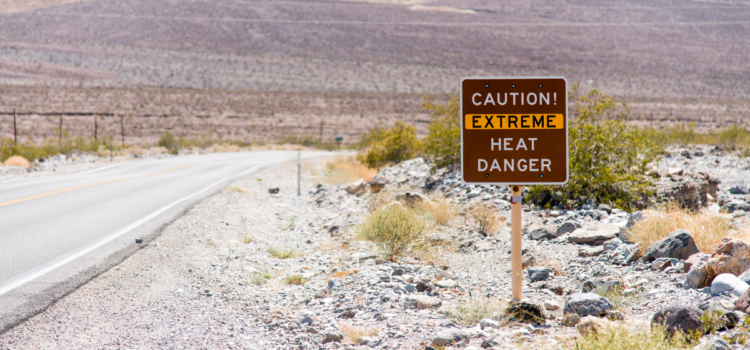
On October 18, the State of California held its first-ever Extreme Heat Symposium to harness the collective power of extreme heat industry experts, community leaders, state policymakers, scientists, and community members to set the stage for extreme heat actions throughout the state in the upcoming years. This symposium followed California’s record-setting heat wave last month.
“With more frequent, intense, and longer lasting heat waves, including record-setting temperatures Californians experienced just last month, there is a need for urgent action to combat extreme heat,” said Lauren Sanchez, Senior Climate Advisor for Governor Newsom. “With the ink dried on another record-breaking $54 billion climate budget this year, the Extreme Heat Symposium opens up a proactive conversation with the state’s implementing partners working on the frontlines to help us map what’s ahead, and how best to position ourselves for success in this work.”
According to a press release sent out by the Governor’s Office of Planning and Research, last month’s heat wave was the most severe ever recorded in California, and the state’s best climate science is projecting higher average temperatures and more frequent and severe heat waves in the years and decades to come.
The California Extreme Heat Action Plan states that: “Extreme heat threatens public health and safety; economic prosperity; and communities and natural systems. It also poses profoundly disproportionate consequences for the most vulnerable among us.”
The Extreme Heat Action Plan consists of a strategic and comprehensive set of state actions to address extreme heat; it also serves as an update to the “Preparing California for Extreme Heat Guidance and Recommendations” report released in 2013.
“Different regions of our state experience extreme heat differently; some areas accustomed to hot temperatures are experiencing very hot conditions while other areas that have been historically cool are experiencing warmer temperatures,” the Action Plan states. “Increasing temperatures also impact people differently. For vulnerable people, including aging populations, children, and those with certain health conditions, and for people without access to air conditioning or shade, extreme heat can be dangerous – even deadly.”
Extreme heat refers to temperatures that are well above normal conditions and extreme heat events are consecutive unusually hot days and nights for a given area. This updated action plan responds to extreme heat as it is experienced differently across California and seeks to support tailored approaches across California’s diverse microclimates.
“We’ve updated that original plan and we’ve emphasized much stronger immediate action and preparation like notifying our most vulnerable communities before heat events occur and making sure that we can provide shelter and relief,” stated Governor Gavin Newsom. “Relief, by the way, that includes a myriad of things including situational needs like air conditioning but also more sustainable strategies like greening and shading.”
According to the press release sent out by the Governor’s Office of Planning and Research, extreme heat is an immediate concern and ranks amongst the deadliest of all climate change hazards and structural inequities play a significant role in the capacity of individuals, workers, and communities abilities to protect and adapt to its effect.
This symposium featured panels that align with the Extreme Heat Action Plan ‘Tracks’ and covered the following topics: climate science, grid reliability, public education campaigns and tracking systems, nature-based solutions, public health, and industry technology and innovation.
The following panels were discussed during the symposium:
- Setting the Stage – Understanding the Risk of Extreme Heat to Build Resilience
- Pushed to the Limit – Getting to Grid Reliability in the Era of Extreme Heat
- Sounding the Alarm – How Awareness Campaigns Keep Communities Safe
- Nature-Based Climate Solutions – Scaling Lessons Learned to Deliver Heat Action
- Health Equity at the Heart of Extreme Heat Action – Strengthening California’s Commitment to Supporting Resilient Communities
- The Road Ahead – California’s Surfaces as a Solution
The California Extreme Heat Symposium was open to members of the public and can still be viewed on the California Natural Resources Agency’s Youtube.